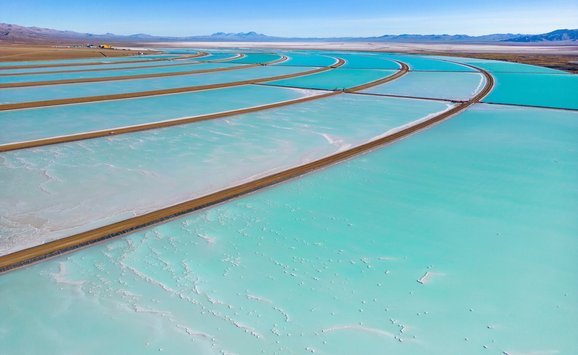NUCLEAR ENERGY. During the year, atomic power plants entered into the short-term investment planning of a substantial portion of the nation's electric utilities. It may be that future historians will pick 1964 as the year in which nuclear energy achieved competitive status. A number of significant 1964 developments followed the announcement late in 1963 that the Jersey Central Power Company had concluded negotiations with the General Electric Company for a nuclear-fueled electric power plant at Oyster Creek to start operation in 1967, which was expected to have lifetime generating costs of under 4 mills per kwh. In order to be competitive, a conventional steam generating plant would have to burn coal costing no more than 20 cents per million BTU (or just under $5 per ton), which is easily 30 percent less than the average cost of coal to Middle Atlantic States utilities in 1963.
The hypothetical 200 cents per BTU cost figure properly relates only to the Oyster Creek plant, as it results from several unusual factors such as a much lower than average rate of fixed charges on capital paid by the Jersey Central Power Company and a possibly low bid by GE at a time of spot stress in the nuclear equipment industry. Moreover, the plant in question is over 600 megawatts (electric)—by current standards a substantial-sized installation, perhaps over twice as large as the average of all new capacity additions in 1963.
It is nevertheless clear from the original announcement, even allowing for its unique features, and from subsequent discussion within the industry, that the experience in building and operating earlier-generation nuclear plants confirms confidence in the capabilities of nuclear power plants to be planned and built in the next few years. General Electric and subsequently Allis-Chalmers issued during the year public price lists of complete nuclear power plants in the range from 50 to 1,000 MWe.
Another indication of the attainment of competitive status was the new US law permitting (and, after January 1, 1971, requiring) private ownership of nuclear fuels, thus ending government monopoly on all fissionable materials under which nuclear fuel was leased to utilities at rates involving a subsidy to users. However, other subsidies remain, including buy-back of plutonium and provision of government indemnity extending beyond the $60 million maximum provided by private insurance companies.
During 1964, plans for two proposed major nuclear installations were abandoned: one at Ravenswood in New York City, and the other at Bodega Bay in California. The 325 MWe Bodega Bay plant was to have been located 1,000 feet from a major geological fault, and the utility's decision to withdraw the application followed a sharp difference of opinion between the AEC Advisory Committee on Reactor Safeguards and the regulatory staff of the AEC over the safety of the reactor in the event of a "maximum postulated earthquake directly under its foundations.” There had been controversy also over the threat of destruction of an area of great natural beauty. The 1,000 MWe Ravenswood plant was to have been built on the East River in Queens, New York, in the heart of the city, and was equally embroiled in controversy over matters of safety. When it dropped the project, the Consolidated Edison Company announced its intention to meet its future power needs from a hydroelectric plant to be built at Hamilton Falls, in Labrador, and linked to New York by 1,100 miles of extra-high-voltage transmission lines. The fact that to date the basic agreements for building the plant have not been concluded deepens the uncertainty over the reasons for abandonment of the Ravenswood nuclear power plant.
Later in 1964 the Canadian AEC announced a decision to build a 1,000 MWe heavy-water nuclear power plant on the shores of Lake Ontario, within the city limits of Toronto. So far no organized opposition to this proposal on grounds of safety has been reported. The Ravenswood and Bodega Bay affairs emphasize the influence of factors other than fuel and operating costs on the progress of the industry. They point to location as a crucial factor; and to the extent that greater safety involves either greater distance or higher cost of facilities, the competitive threshold may once more slip away.

WORLD ENERGY DEVELOPMENTS. An intensifying diversification of supplies, both geographically and by type of fuel, marked the world's energy situation in 1964. Traditional fuels, such as crude oil and gas, assumed growing importance in new locations; new sources —oil from shale and tar sands—for the first time reached the stage of a commercial venture; and electric energy from nuclear reactors continued to gain ground in many places.
The United States remains the greatest single producer and consumer of energy in the world and with Canada accounts for more than 50 percent of Free World energy supplies. But the Middle East, Africa, and Caribbean America are becoming increasingly prominent as oil surplus areas. Last year for the first time more oil was produced in the Middle East than in the United States. It is Africa, however, where the growth in crude output is most spectacular, reaching about 1.7 million barrels daily in 1964. During the year African natural gas also made news, as the first ocean-borne shipment of liquefied gas from North Africa reached Europe.
Production began during the year from the world's third largest single natural gas deposit, in the Netherlands province of Groningen. Its annual anticipated flow of natural gas on the order of 50 million tons of coal equivalent will be distributed throughout Northern Europe. The potential contribution of the offshore oil and natural gas in the North Sea remains purely speculative; intense prospecting and drilling activity during 1964 has failed so far to yield conclusive results.
In the meantime Western Europe —particularly the United Kingdom, France, Italy, and Germany—pushed forward national programs for the development of atomic energy. At the end of 1964, approximately 3,000 MWe of nuclear-based generating capacity was installed in Western Europe, most of it in the United Kingdom. This might rise to as much as 30,000 MWe within the next decade, should hopes for the discovery of North Sea hydrocarbon deposits fail to materialize. At the same time, the impact of a purposefully planned Soviet oil export surplus at attractive prices (now about 1 million barrels per day) may significantly affect the rise of atomic energy, not only of Western Europe but also of Japan.
The year marked the beginning of commercial production of crude oil in Australia, though still in small quantities. A 190-mile long, 10-inch pipeline delivers the crude from the Moonie field in Queensland to Brisbane on the east coast from where it is transported to Sydney and Melbourne. The potential contribution of natural gas is assuming even greater significance for the Australian economy, which up to now has been predominantly fueled by coal. Recent discoveries indicate substantial deposits of natural gas in Western Australia and the Northern Territory. Numerous findings of gas and condensate had been made earlier in Queensland.
Potential sources of oil—so vast that they dwarf world petroleum reserves—have long been known to exist in the shale lands of Colorado, Wyoming, and Utah, and the tar sands of Athabasca, in Canada's province of Alberta. But the technology to make these sources competitive has been lacking. In 1964, however, two efforts got under way to exploit the deposits commercially: one in Colorado, where an oil company, a mining company, and a shale oil company joined forces to put into operation a shale oil plant by 1967; and one in Alberta, where the provincial government gave the go-ahead for a 45,000-barrels-a-day plant to turn Athabasca tar sand into liquid fuel, with the stipulation that operation's begin no later than September 30, 1967. Both undertakings should throw much-needed light on the outlook for competitive production of oil from new sources.







